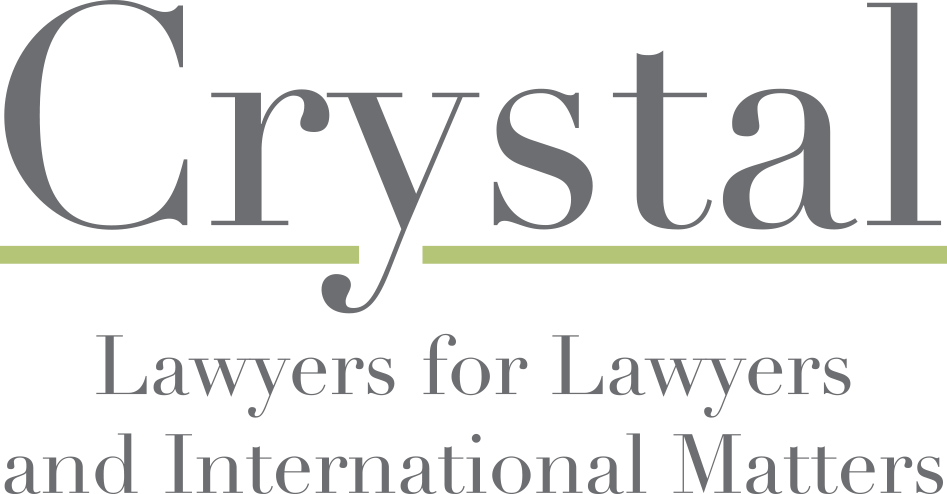Most legal malpractice insurance applications and renewals include a general question similar to the following one asking the applicant to disclose “any circumstance which may result in a claim being made against your firm.” This question must be answered with care because cases have held that an insurer may rescind a policy if the applicant makes an intentional misrepresentation in answer to this question or even an innocent misrepresentation if the misrepresentation would have a material effect on the insurer’s risk. In addition, rescission of the policy may eliminate coverage for all members of the firm, even those who were innocent both with regard to the misrepresentation and with regard to the circumstances that could result in a claim. Consider recent cases.
In Illinois State Bar Assn. Mutual Ins. Co. v. Law Office of Tuzzolino and Terpinas, 27 N.E. 3d 67 (Ill. 2015), the insurance company (ISBAM) sued for rescission of a malpractice policy issued to the defendant firm on the ground that the firm had failed to disclose material information about Tuzzolino’s mishandling of matters on behalf of a client named Colletta. In April 2008 Tuzzolino completed a renewal application with ISBAM. The application had the following question: “Has any member of the firm become aware of a past or present circumstance(s), act(s), error(s) or omission(s), which may give rise to a claim that has not been reported?” Tuzzolino checked the “No” box for this question. At the end of the application Tuzzolino signed as “owner/partner” the following representation:
I/We affirm that after an inquiry of all the members of the applicant firm that all the information contained herein is true and complete to the best of my/our knowledge and that it shall be the basis of the policy of insurance and deemed incorporated therein upon acceptance of this application by issuance of a policy.
ISBAM issued the policy effective May 1, 2008. Approximately one month later Tuzzolino’s partner, Terpinas, learned about a possible claim by Colletta when he received a lien letter from a lawyer representing Colletta. Terpinas immediately reported the claim to ISBAM.
Subsequently, ISBAM brought suit to rescind the policy on the ground that Tuzzolino’s material misrepresentations voided the policy. The trial court granted ISBAM’s motion for summary judgment; the court found that ISBAM did not have a duty to defend Terpinas or the firm against Colletta’s claims. Terpinas and Colletta appealed claiming that Terpinas was an innocent insured and the policy should not be rescinded against him. While the intermediate appellate court found for Terpinas, the Illinois Supreme Court reversed and found that the policy was rescinded even as to Terpinas.
The state supreme court relied on a provision of the state insurance code. Under this provision a misrepresentation by the insured or “in his behalf” defeats the policy if the misrepresentation is made with actual intent to deceive or if it has a material effect on the insurer’s risk. Two points about this provision are significant. First, the misrepresentation does not need to be made by the insured personally. Second, even an innocent misrepresentation is sufficient to invalidate a policy if it has a material effect on the insurer’s risk. While the court based its decision on the state insurance code, that code provision essentially restates common law principles that have been applied by other courts. Terpinas argued, however, that it was “patently unfair” to rescind the policy as to him because he was not involved in either the conduct that produced the claim or the misrepresentation to ISBAM. The court distinguished prior cases dealing with innocent insureds, finding that those cases involved refusal to apply a policy exclusion against an innocent insured rather than rescission of the policy because of misrepresentation. Those cases did not involve the validity of the policy. Instead, when misrepresentation in the application occurs, the focus is on the effect of the misrepresentation – issuance of the policy – not on the guilt or innocence of the insured.
The ISBAM case is perhaps understandable because Terpinas was seeking coverage for the very claim that was the basis of misrepresentation to ISBAM. If the court had decided in Terpinas’ favor, it would have provided at least partial coverage for a claim that ISBAM clearly would have excluded from coverage if there been full disclosure. Suppose, however, that the claim against the innocent insured was not the basis of misrepresentation (e.g. a missed statute of limitations in a case that arises after the policy is issued). Even in this case, coverage may not be applicable. The court in the ISBAM case cited with approval the Seventh Circuit’s decision in Home Insurance Co. v. Dunn, 963 F. 2d 1023 (7th Cir 1992). In Dunn the applicant attorney had engaged in criminal activities but, not surprisingly, did not disclose this conduct on the firm’s application for malpractice insurance. One of the other attorneys in the firm, who did not have any involvement in either the criminal conduct or in the application for insurance, was sued for malpractice in an unrelated matter. Nonetheless, the Seventh Circuit ruled for the insurer: “Though the other attorneys did not intend to deceive, the falsehood on the application is fatal. [The crooked attorney’s] misrepresentation caused [the insurer] to issue a policy to all the attorneys that otherwise would not have been forthcoming.” Id. at 1026.
The approach to rescission of legal malpractice policies because of misrepresentation as reflected in ISBAM and Dunn is not uniform. In First American Title Insurance Co. v. Lawson, 827 A.2d 230 (N.J. 2003), an LLC had three members, two of whom were involved in a kiting scheme, while the third was unaware and uninvolved in the misconduct. The malpractice carrier sought to void the policy on the ground of misrepresentation in the application. The court rejected this argument as to the innocent member. Under New Jersey rules of court, an LLC must carry a specified minimum level of malpractice insurance. The court reasoned that rescinding the policy as to the innocent member was inconsistent with the public policy of protecting consumers of legal services with malpractice insurance. In addition, rescission as to the innocent member was inconsistent with his expectation of limited liability when participating in an LLC with insurance as required by New Jersey law. South Carolina does not require lawyers to carry legal malpractice insurance, so the case may not be followed in this state.
The American Law Institute is at work on a Restatement of the Law of Liability Insurance. The Institute has issued Tentative Draft #1 January 6, 2014. The draft proposes changes in the misrepresentation defense, in particular elimination of the defense when the misrepresentation is innocent, see §7, comment b, and elimination of the concealment defense, id. comment h. Elimination of the concealment defense should protect innocent insureds from nondisclosure of material information by the applicant. However, whether the courts will accept this change is unclear.
How should a firm proceed when applying for renewal or new issue of its malpractice policy?
First, a firm should engage in due diligence to determine if there are potential claims that should be reported to the carrier. Each firm must decide what constitutes due diligence, but it is risky to rely on a single member of the firm, even the senior partner to handle such matters. I suggest that the firm have at least two members in charge of reviewing the firm’s response to questions regarding malpractice applications or renewals. I recommend that the firm require all members of the firm to provide written certifications to the firm representatives in charge of completing the firm’s application identifying any circumstances that could reasonably lead to a claim against them or the firm. The request for certification should point out the importance of that matter – i.e. that a false response by the firm to the insurer could result in invalidation of the firm’s malpractice coverage as to all claims and all lawyers in the firm, even those who are innocent of wrongdoing. The firm could also consider sending a memo to all staff members soliciting similar information on the theory that a lawyer who has engaged in intentional misconduct might conceal the matter, but a secretary or paralegal might disclose if the firm invites the nonlawyer to provide such information. Communications to lawyers and nonlawyers should specify that the most common situation that should be reported to the firm is a procedural error that has led to a result adverse to client, such as dismissal or a highly unfavorable ruling. Another situation requiring scrutiny is when a client has discharged the firm and retained other counsel.
Second, I suggest that a firm should rarely answer “no” to the general inquiry question on the application. Instead, I recommend that the answer be either “yes, see attachment” or neither yes or no, but “see attachment.” On the attachment the firm would describe the due diligence it has done and would provide information about any problem cases revealed during the due diligence process. In making this disclosure the firm should limit the information given to the insurer to a general description of any problem matters to protect the confidentiality of client information. Model Rule of Professional Conduct 1.6.
Firms should consider inclusion in their engagement agreements of provisions in which clients consent to the firm revealing information about client matters to the extent the firm reasonably believes to be necessary to comply with insurance applications or policies. The attachment should have a general disclaimer like the following: “The firm has made the inquiry described above to identify potential claims, which are listed below (if any). The firm does not represent, warrant, or guarantee that it has identified all potential claims against it. Any specific questions from the insurer about potential claims should be addressed to [identification and contact information for lawyer responsible for response to inquiries].”
For more information, Nathan M. Crystal
[This blog is a shorter version of my article Malpractice Insurance Applications and Renewals— Don’t Just Say “No”, South Carolina Lawyer 12 (July 2015)

